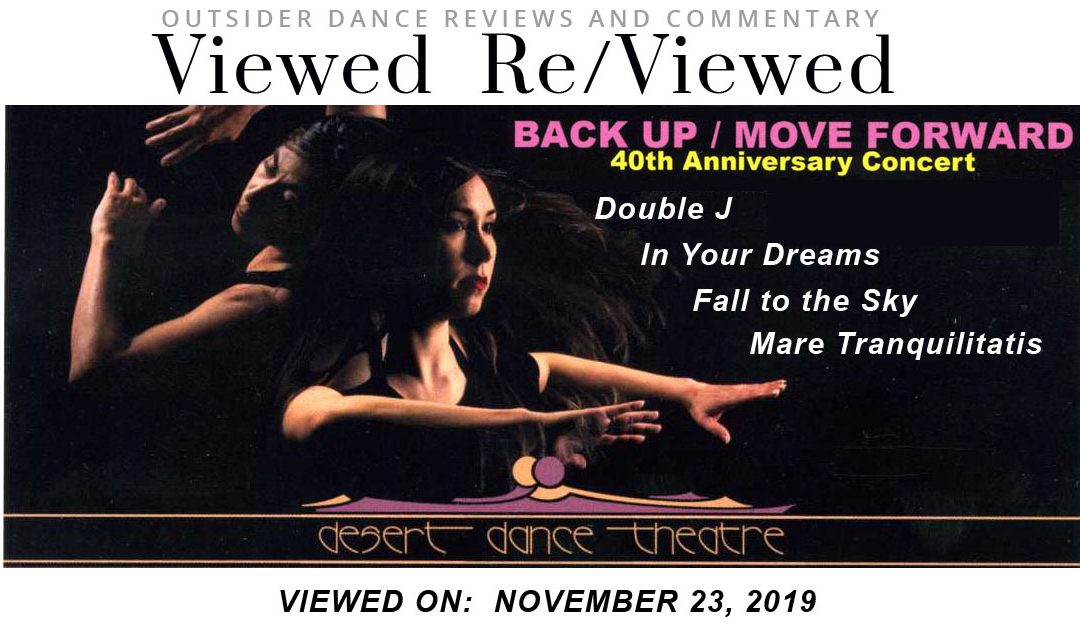Company: Desert Dance Theatre
Choreographer: Danielle McNeal Johnson
Performers: Shayna De Cruz, Derrick Patten
This piece demonstrates choreographer Danielle McNeal Johnson’s light touch with a fun-filled M/F duet that expresses the couples real enjoyment of each other. However…
The problem with using recognizable music in a dance work is that people already have a relationship with it and have formed their own personal visual and emotional references – which may not be in alignment with the choreographer’s intentions for a particular piece. I believe McNeal Johnson is contending with that in her musical choices for this program.
“Happy Trails” is a song that has been imprinted on the culture. It’s difficult to hear it without seeing Roy Rogers and Dale Evans clip-clopping into the sunset in some old black and white western. They wrote it, they sang it and, generations later, they still own it. While the lyric expresses the sentiment of friends parting fondly “till we meet again”, that sentiment is buried deeply under Hollywood images of the wild west – and the printed program gives us no clue otherwise. As the two dancers begin from a prone position, I can’t shake the image of them sleeping out on the prairie under the stars. From there, I think the dance is supposed to be some kind of send-up of old TV westerns and, left to my own devices, it takes me forever to get to what would otherwise be the obvious sense of playful friendship being acted out between the two dancers. Even if this could be differentiated from the original, (maybe the Van Halen cover? Something.) – I would still take issue with the sentiment. The lyric is all about parting and the dancers are all about connection.
Fortunately, the song for the second movement, “On the Road Again” doesn’t carry all that baggage and it’s rollicking energy supported the exuberance of the dancers – who were positively beaming at times. Their enjoyment never appeared “actorly” or inauthentic. They lean into each other, sharing their weight in different configurations that are indicative of a real comfort level in the partnership and I believe best express the theme of enduring friendship intended by the choreography.
Double J is light and whimsical in nature, with a good deal of playfulness, particularly in the second movement, which is expressed in some energetic floor work and a few playful, schoolyard-level interactions, including, god help us, an actual summersault – which I think is a demonstration of just how unpretentious and authentically fun the piece really is.
While the familiarity of the soundtrack threw me off initially, on reflection I can see the choreographer’s intent – a physical expression of easy, enduring companionship – which her dancers executed with a light-hearted energy and a good deal of sincerity.
Viewed Re/Viewed


Recent Comments